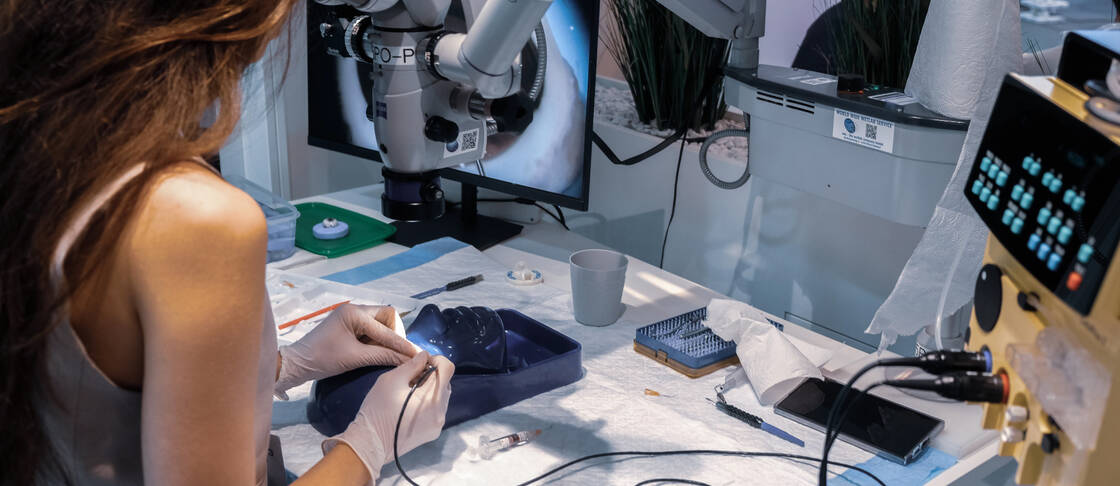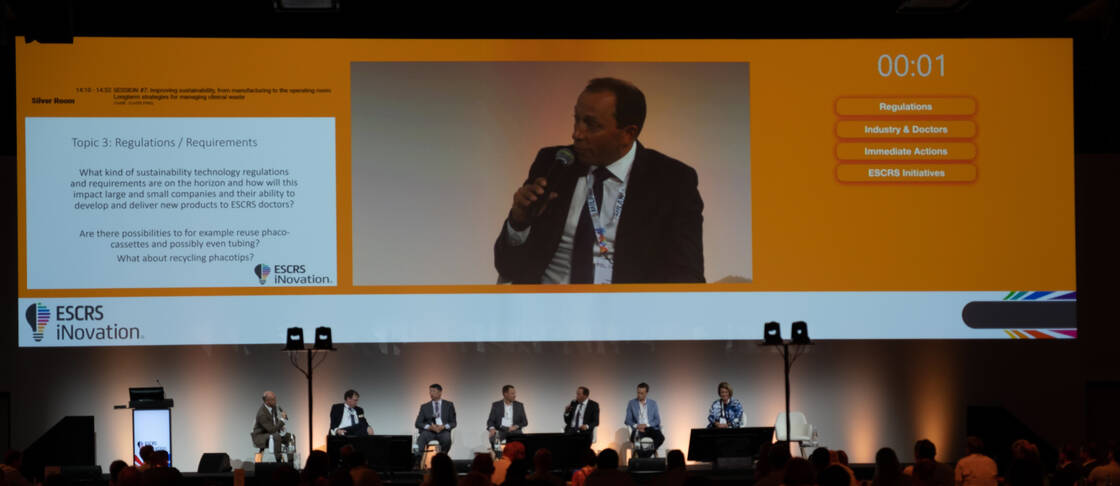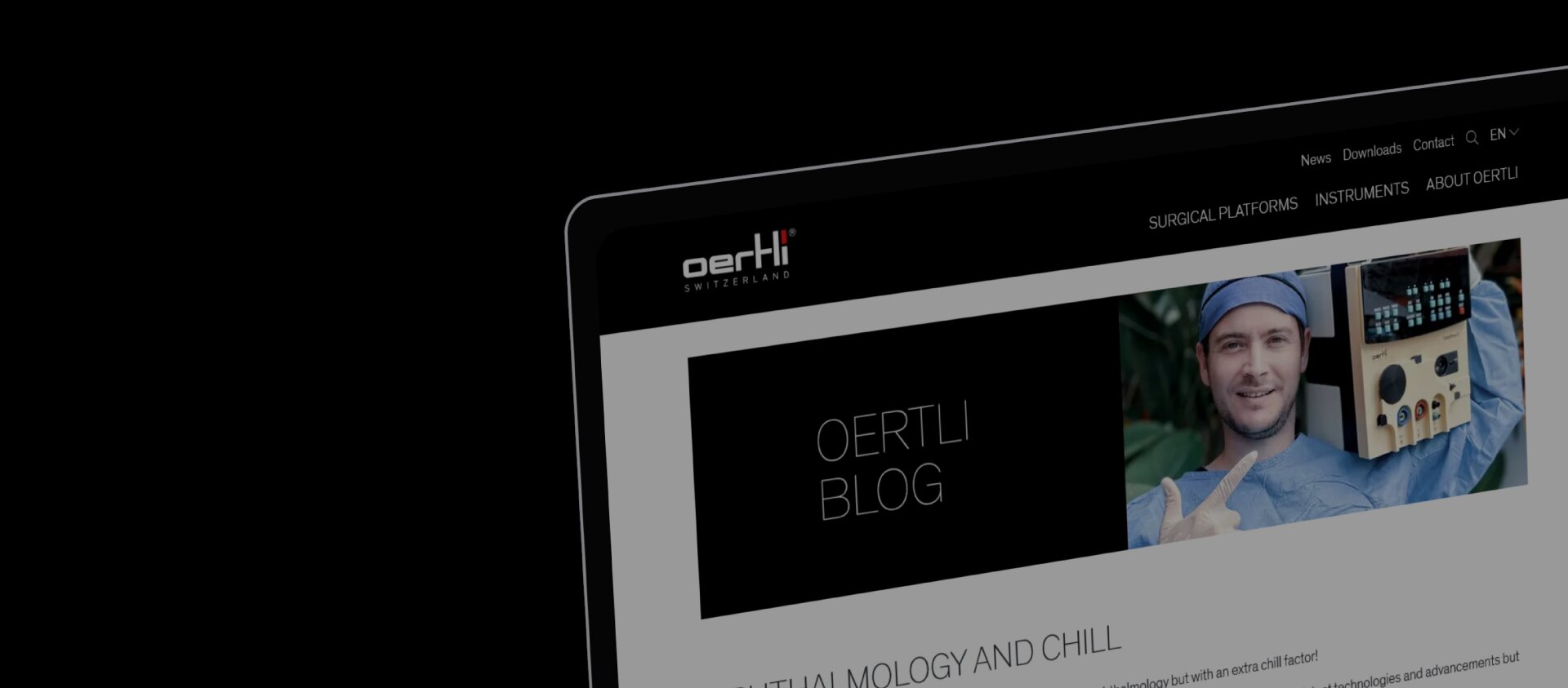
Congresses and conferences in ophthalmology - Important?
Published: 29/11/2023, Reading time: 5 minutes
In the dynamic world of ophthalmology, congresses and events meetings like ESCRS, AAO, ASCRS and many more play a crucial role. These gatherings are not just meetings events but hubs of learning, networking, and innovation drivers. With digital technology's rise, a new era of virtual congresses has emerged, complementing traditional in-person events.
The Evolution of Ophthalmology Congresses
Ophthalmology congresses have undergone significant changes. Traditional in-person gatherings have expanded to include digital platforms, leading to virtual congresses.
This evolution allows for a broader audience and maintains the essence of these congresses - knowledge sharing and professional education. The blend of virtual and physical elements in recent events, particularly in prominent congresses like the European Society of Cataract and Refractive Surgeons (ESCRS), American Academy of Ophthalmology (AAO), and American Society of Cataract and Refractive Surgery (ASCRS) just to name a few, showcases the adaptability of the ophthalmology community.
1990s
- Format and Technology: In the 1990s, congresses were predominantly in-person events. The technology was relatively basic, with presentations often using slide projectors or overhead projectors.
- Accessibility and Reach: These events were more geographically constrained, typically attended by those who could afford the travel.
- Content and Structure: The content was mainly delivered through lectures, panel discussions, and physical poster presentations.
2010s
- Digital Integration: The 2010s saw a significant increase in digital integration. PowerPoint presentations became the norm, and some conferences started offering digital materials or apps for attendees.
- Social Media and Online Engagement: Social media platforms began to play a role in networking and engagement, both before and during the congresses.
- Interactive Elements: There was a greater emphasis on interactivity, with Q&A sessions, live polling, and workshops becoming more common.
2020s and Beyond
- Virtual and Hybrid Formats: Due to the COVID-19 pandemic, many congresses shifted to virtual or hybrid formats. This change significantly increased accessibility and global participation.
- Sustainability Focus: Greater emphasis on sustainability, with some congresses reducing physical footprints and opting for hybrid alternatives.
- Diverse Participation: Virtual formats have democratized access, allowing a broader, more diverse range of participants from around the globe.

The Interplay Between Industry and Congresses in Ophthalmology
In the realm of ophthalmology, the interaction between the industry and congresses is a critical driver of progress and innovation. This relationship extends far beyond the boundaries of financial sponsorship.
At the heart of this interplay is the opportunity for the industry to showcase their latest innovations. Ophthalmology congresses are the stages where cutting-edge technologies, new pharmaceuticals, and surgical products are unveiled. These platforms are not just about displaying products; they're about engaging directly with the practitioners who will use them. This engagement provides invaluable feedback, shaping the future development of these technologies.
Moreover, the educational aspects of these congresses are often enriched through industry partnerships. Companies collaborate with organizers to provide workshops, training sessions, and symposia, playing a pivotal role in introducing new techniques and research findings. This symbiosis between industry knowledge and clinical expertise facilitates a deeper understanding of evolving practices and treatments in ophthalmology.

Additionally, the industry's involvement in congresses is instrumental in supporting the continuing education of ophthalmologists. By sponsoring and contributing to continuing medical education (CME) activities, the industry plays a direct role in the professional development of practitioners. This not only ensures that ophthalmologists stay abreast of the latest advancements but also reinforces the commitment of the industry to high standards of patient care.
In essence, the bond between the ophthalmology industry and congresses is one of mutual benefit and shared goals. It's a relationship that fuels innovation, facilitates learning, and ultimately, advances the quality of patient care in the field of ophthalmology.
How Oertli Instrumente AG contribute to conferences
At Oertli, we are committed to supporting ophthalmologists in their education. Therefore, we make significant investments in both international and local congresses. We firmly believe that a successful meeting is a symbiosis between an engaging exhibition featuring innovative industry partners, a meticulously curated scientific program delivered by professionals, and a top-tier congress organization that fosters a dynamic live platform for all attendees to connect. While virtual and hybrid events undoubtedly offer advantages, we hardly advocate in-person interactions as dedicated exhibitors. There's an undeniable value in meeting practitioners face-to-face, and it remains our preferred mode of engagement.

Phaco History
Check out our blog about the history in phacoemulsification - and more.
Robotics and AI in ophthalmology
Discover the latest innovations and get all the information you need on this topic.
Glaucoma and HFDS
HFDS shows its love for the eyes by offering a minimally invasive and gentle approach to glaucoma treatment. Check it out.
Oertli data on file
This blog post now accurately references the provided sources in the correct order, ensuring clarity and proper attribution of information. If you have further adjustments or additions, feel free to ask!
This blog was written with the support of artificial intelligence (Chat-GPT).
